How AI in Construction Estimating Saves Time and Boosts Accuracy
Written by Bridget Cooper

Artificial Intelligence (AI) is shaking things up in industries across the board. Even in the construction industry, which has always leaned heavily on traditional, manual methods, AI is also making its mark.
Estimating construction costs, for instance, is notorious for being time-consuming and prone to human error. Mistakes mean money down the drain and construction projects dragging on forever.
However, AI offers a solution by streamlining tedious administrative tasks, allowing estimators to focus on more important aspects of their jobs. In this guide, we'll walk you through how AI helps make estimating quicker and less of a headache for everyone involved.
The Role of AI in Construction Estimating
One of the biggest myths about AI is the fear that it will take over estimators' jobs. But even with AI's impressive advancements, this scenario is far from reality.
Think about what makes you invaluable as an estimator. Your real strength lies in:
- finding cost-effective alternatives for materials
- making critical project management decisions
- clarifying ambiguous details in construction cost estimates
- spotting inconsistencies in estimate construction costs
These nuanced tasks hinge on your seasoned judgment and deep industry knowledge that AI simply doesn't have at this point. Maybe one day AI could tackle these decisions. But for now, it can't replicate the nuanced understanding that seasoned estimators provide.
That brings us to the real concern: how you can use AI to change the way you work.
AI can handle the tedious, time-consuming tasks that can bog down your day. It lets you devote your energy to activities that add more value to construction companies. Let's explain in more detail below.
How AI Helps Save Time in Construction Cost Estimation
Spending days, or even weeks, analyzing massive specification books and construction plans is an unfortunate reality for most estimators.
Spec books can easily stretch over 1,000 pages long. Even when estimators split the work, carefully checking each section by flipping through pages and cross-referencing the spec book can still take a lot of time.
One big problem is that rushing through can make you miss important details, setting off a domino effect of delays and costly change orders that could have been avoided earlier.
And this bottleneck doesn't just affect GCs. It also trickles down to subcontractors, squeezing their time frame to submit bids.
Typically, subs count on GCs for quantities to prepare their quotes. Any delay in estimators completing their take-offs could force these bids to be rushed, possibly inflated, or, worse, lead to hesitancy to bid because of the short timeline.
So, how can you use AI in the pre-construction process to save time? We’ve identified three ways:
- Using it to summarize specs
- Highlighting keynotes, schedules, and phrases
- Identifying relevant bid packages
Summarizing Specs
In 1000+ page spec books, there's often a lot of crucial info mixed in with lots of standard, repetitive content. Finding the important bits can be tough and take hours.
AI can transform how you approach spec reading - making it faster, easier, and more efficient. It can distill your documents into a neat version that cuts through the fluff and brings the most important information to the forefront.
Below is an image showing a side-by-side comparison of the original specs (in red) versus the AI-summarized specs (in green).
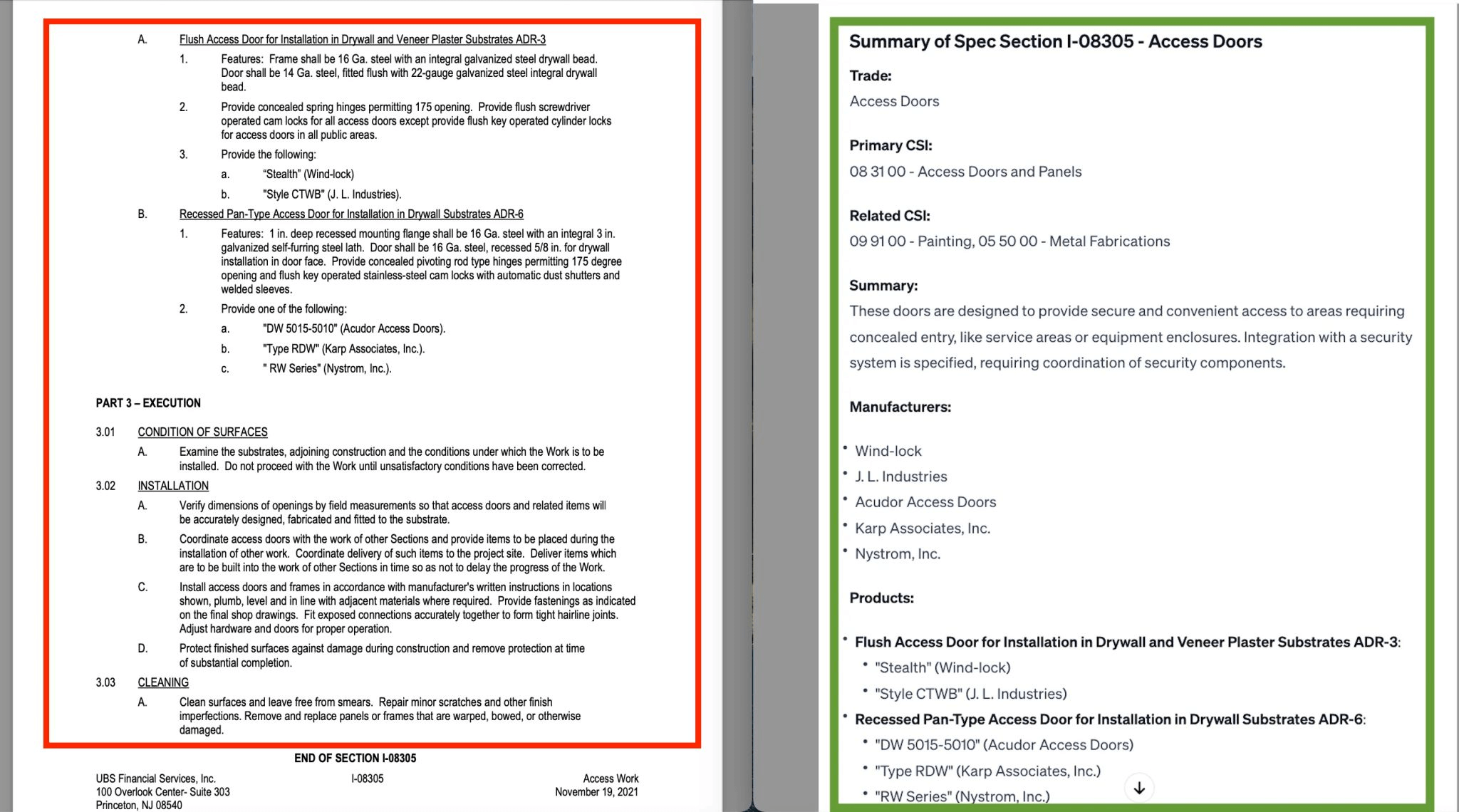
The summarized version:
- is more visually appealing
- using AI for construction plans allows you to understand complex details more efficiently and effectively
Highlighting Keynotes, Schedules, and Phrases
Key details are easy to overlook in a sea of information. That's where AI shines by highlighting keynotes, schedules, and phrases that are critical for a particular trade, organizing it cohesively.
For instance, it can aggregate all mentions of metal doors across various sections (like architectural and structural) into an organized overview.
This feature goes beyond the basic functionality of "CTRL-F". While "CTRL-F" allows for keyword searches, AI can help search across construction concepts (to some degree).
For example, in the context of metal doors, AI wouldn't just highlight every instance of the word 'door' across the documents. Instead, it identifies and aggregates all related information — ranging from door schedules, precise locations on the plans, specific spec details, warranty information, manufacturers, to types of doors.
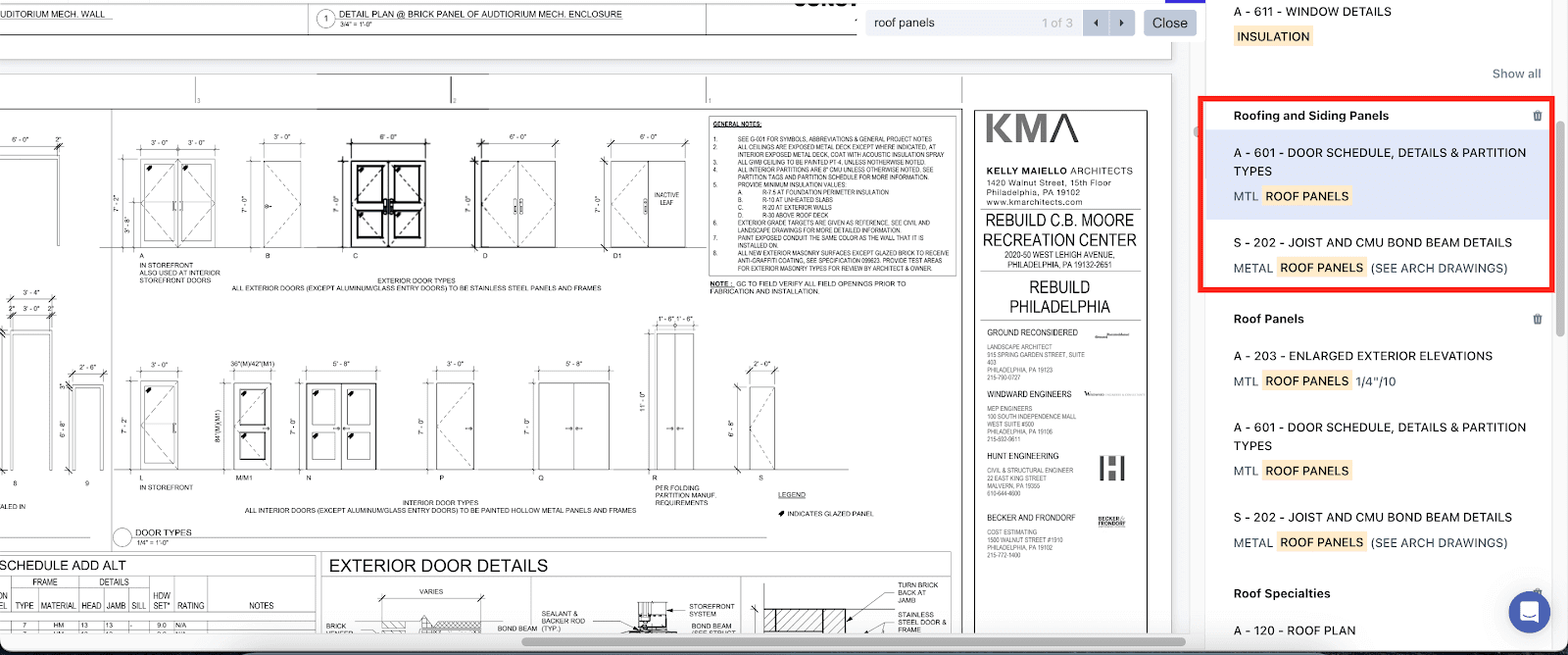
A regional GC recently shared their experience with this AI solution. After using an AI tool to go through the plans and conduct a full page-turn, the GC discovered a mention of "epoxy" that they had initially missed.
This detail was hidden in a small text line on the flooring schedule on page 147 in a 500-page set of plans. Such details often exist scattered throughout plans, and even the most diligent of estimators can't be 100% accurate all the time.
The key takeaway? AI excels in uncovering relevant details across construction plans, offering a broad view of the necessary information. But as we've already mentioned, deciding what to do with these details remains the estimator's expertise.
Identifying Scopes
Missing scopes of work can lead to major headaches for both GCs and subs. For instance, GCs might issue ITBs to subs without accurately considering if the subcontractor's scope of work is included in the plans. This:
- results in spamming subcontractors with irrelevant proposals
- frustrates them when they regularly receive plans that fall outside their expertise.
And then, there's the flip side. GCs spend ages flipping through pages to send out these ITBs. This long process means subs often receive plans way too late. Nobody wins.
AI tools for construction can help GC estimators send out ITBs quickly and make sure they're hitting the right scopes – without the need for a detailed page-turn.
Take Downtobid, for example. The platform uses an AI engine to analyze construction documents, instantly calling out required bid packages with direct references back to the relevant page numbers. The outcome is a quicker, more accurate bidding process, where subs can give precise quotes for the right tasks.
So how does Downtobid nail this?
- Optical Character Recognition (OCR) Technology: This software that converts images of typed, handwritten, or printed text into machine-encoded text. In the context of construction plans, this involves digitizing every piece of the construction plan and changing physical blueprints into an analyzable digital format.
- Advanced Large Language Models (LLMs) and Machine Learning: These AI models have improved a lot and can now accurately infer specific bid packages, such as lighting or mechanical, based on the digitalized specs and schedules.
- Standardization: To make an AI smart and useful, you need to feed it lots of structured data. This means organizing all that chaotic info from blueprints and plans in a way the AI can understand. Downtobid does this by turning all those construction blueprints and historical data into a standardized format. The image below shows an example of this process in action. The red marks are schedules, and the blue are drawings.
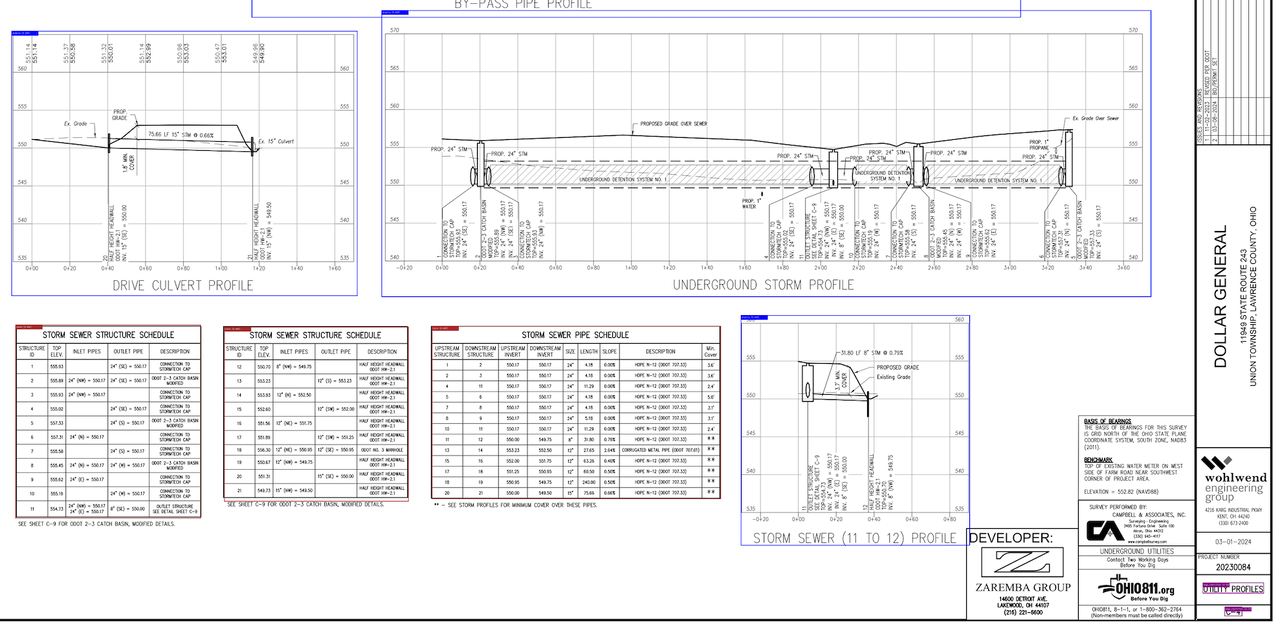
In practice, this AI-driven approach drastically cuts down the time needed to understand a plan set.
Consider this Discount Tire project plan which was processed through Downtobid's AI. If you're curious, you can click this link to follow along.
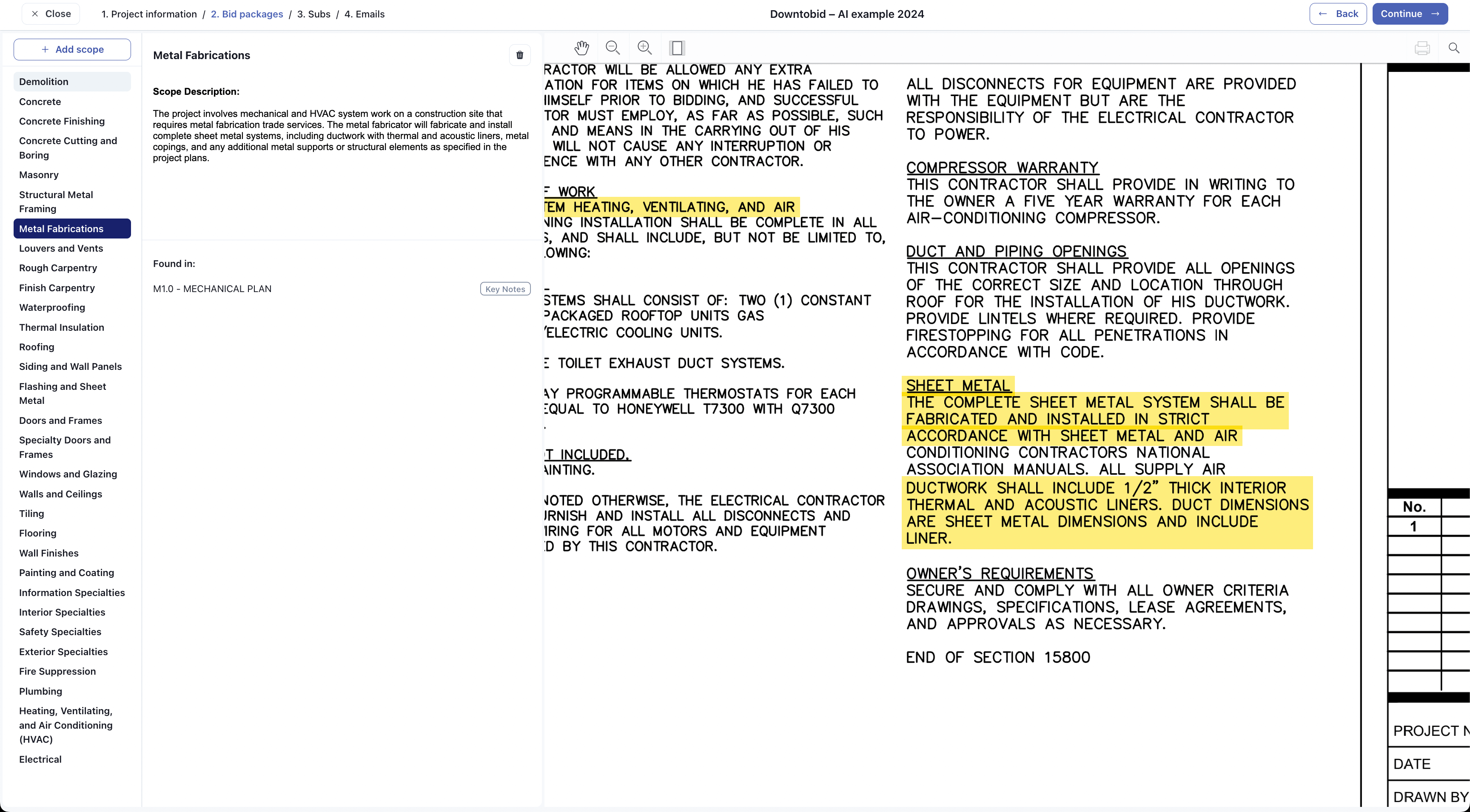
In just about 6 minutes, the AI went through over 40 sheets of the plan -- way quicker than any team of estimators could. It was able to:
- identify 31 potential scopes
- provide summary outlines for each
- highlight relevant evidence directly on the drawings.
Not every single one of the 31 scopes it flags is going to be spot on. There's always a few that don't quite fit -- consider them false positives.
The real benefit is that AI gives you a solid place to start digging deeper. This way, you're not starting from scratch, and you can zero in on what really matters for your project.
Getting Started with Downtobid
Using Downtobid is a breeze, and here’s how you can get the cost estimation process off to a quick start:
Upload Plans
First things first, click here to jump to the upload page. It's straightforward - drag and drop your project plans or browse to select the files you want to analyze.
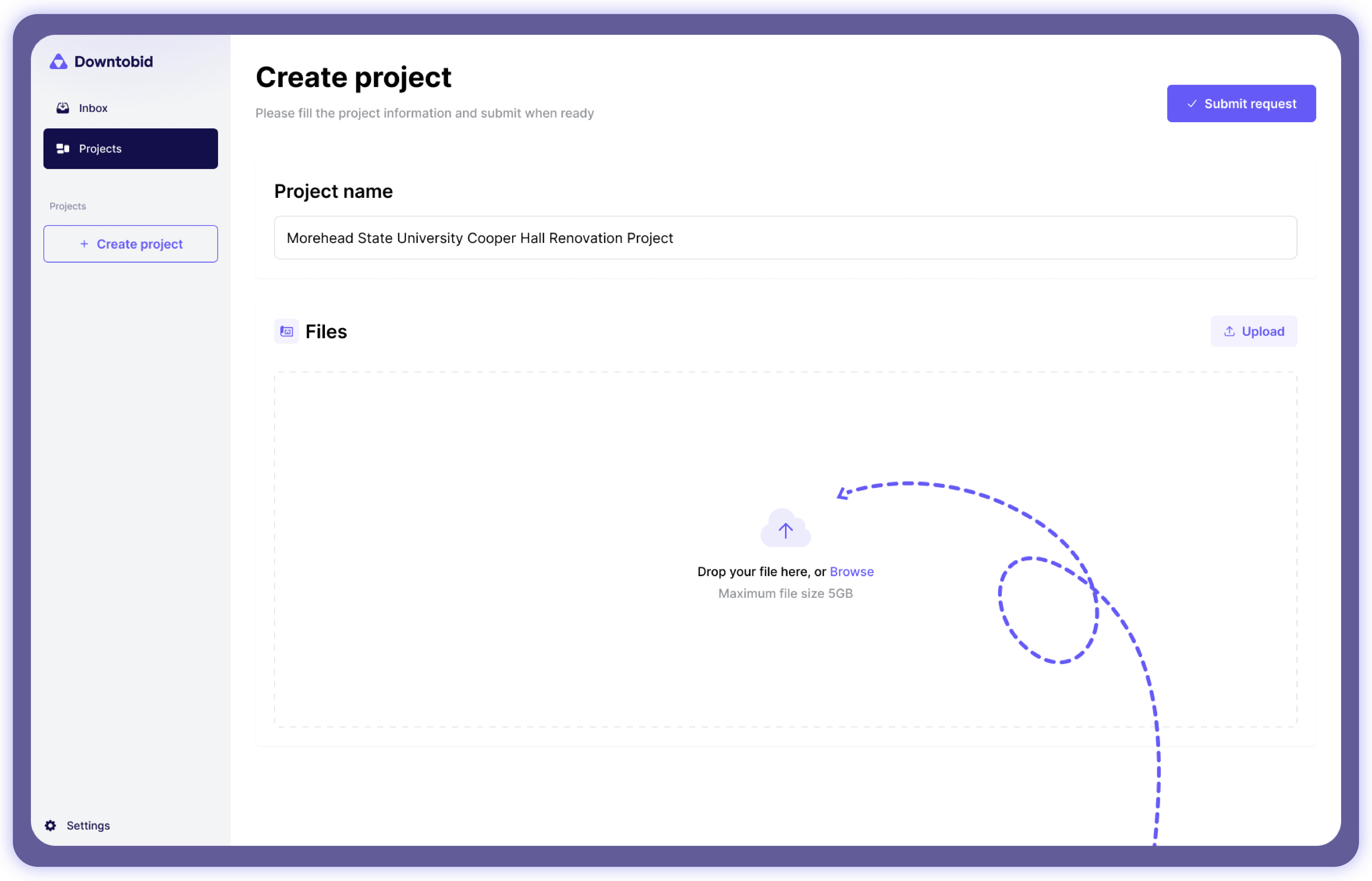
Plan Analysis
Downtobid's AI combs through each page, identifying scopes and creating customized bid packages tailored just for you. Depending on how complex your project is, this step generally ends in about 10 to 30 minutes. Once it's done, you'll get an email informing you it's time to check out your bid packages.
Review Your Bid Packages
Log in, and you'll find a list of bid packages waiting for you. Each one comes with a handy scope sheet that lays out everything you need to know:
- a clear description of the bid package
- each instance where the AI detected scope in the plans.
- a curated list of recommended subcontractors for the construction process
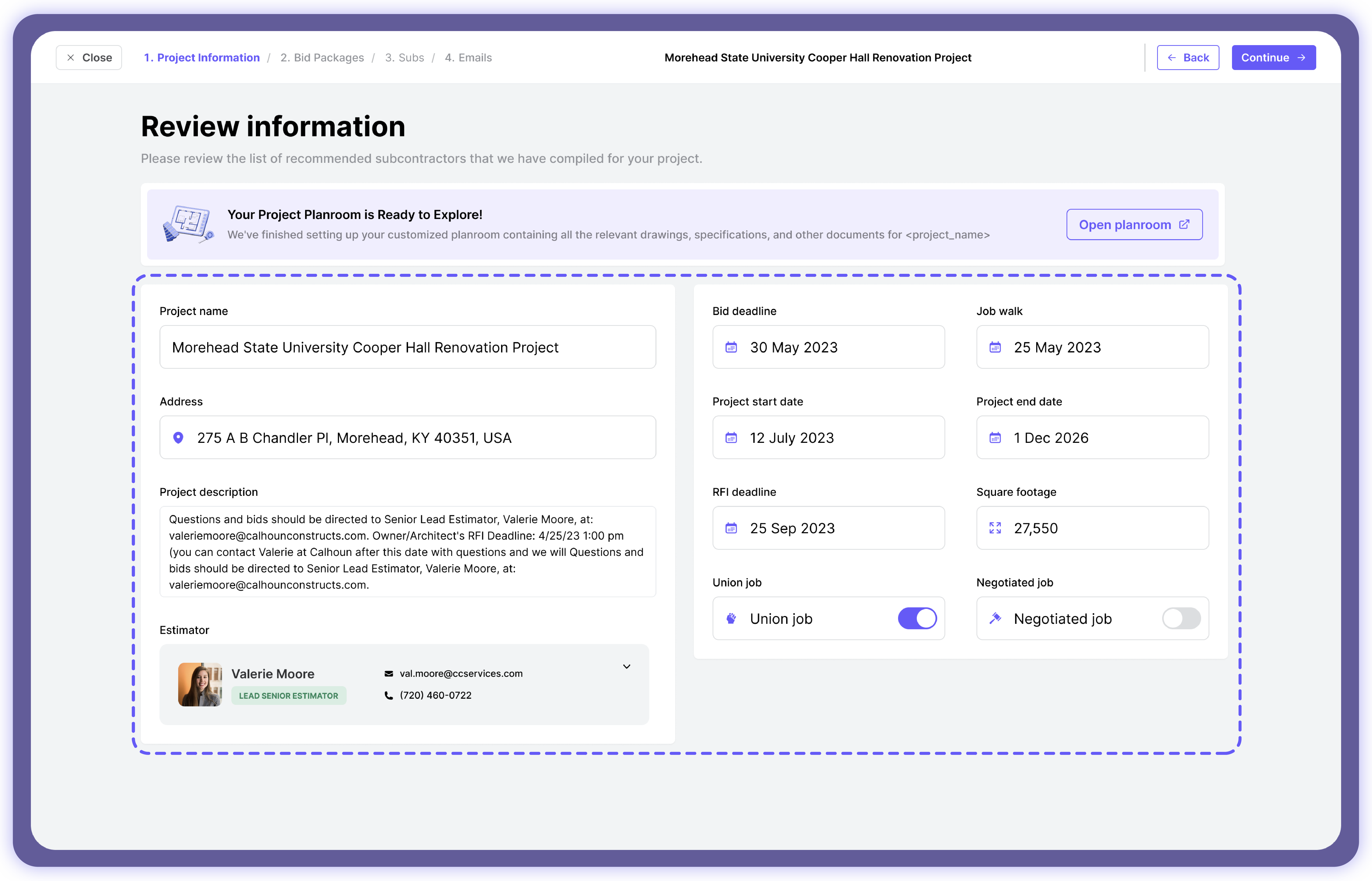
Now, you're all set to reach out and invite your preferred subs to your project.
To invite them, you can use our personalized ITB templates. These personalized ITBS mention subs by name and address their skills and past projects. It also includes project data and a summary of the construction project. This way, subs can know right away that you're not just spamming them.
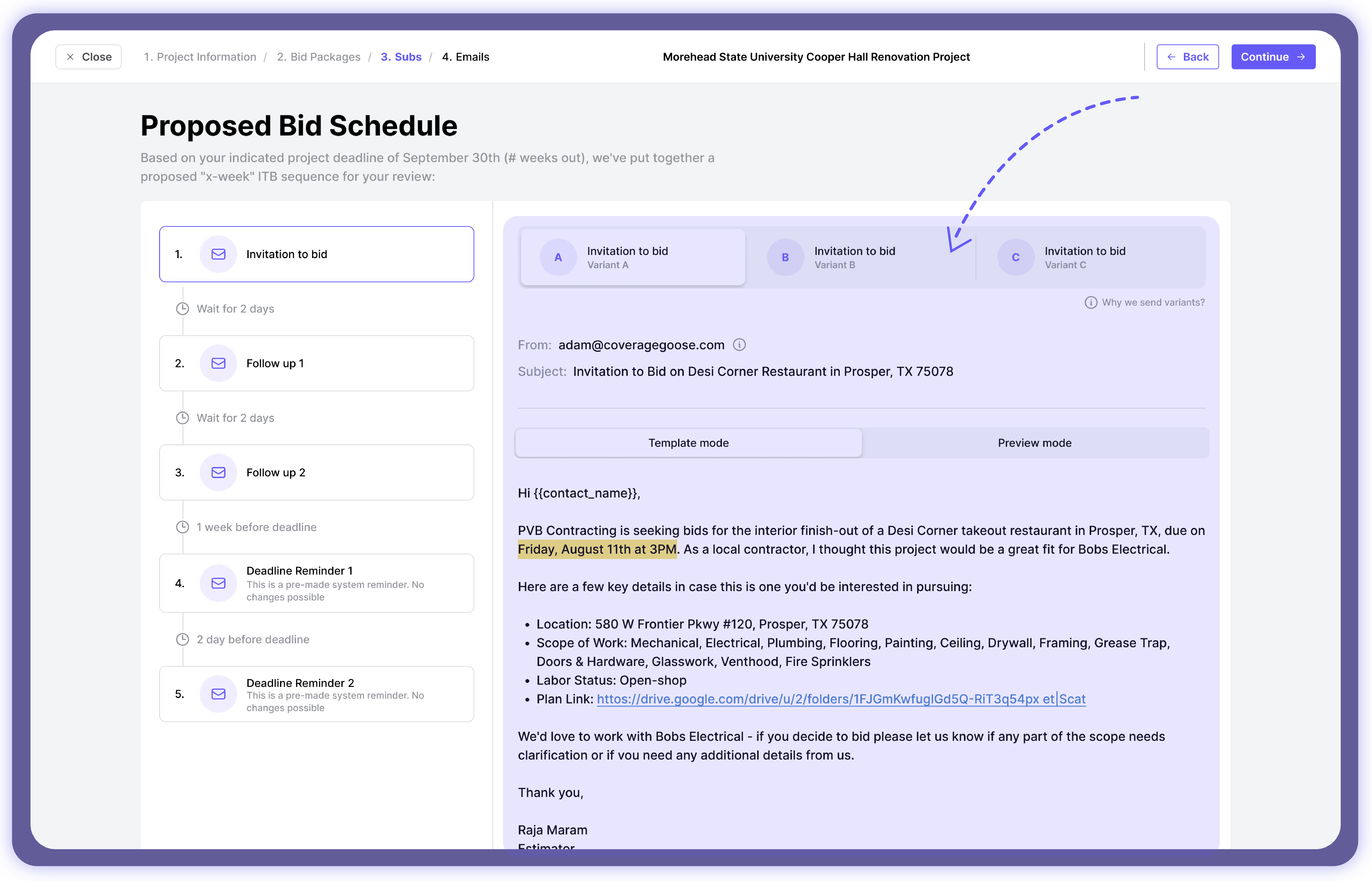
If there's any follow-up needed, our AI takes care of that too. It schedules reminders at just the right times, making sure nobody misses a beat as the proposal deadline approaches.
Subcontractors Bid on the Project
Once your bid packages are ready, Downtobid makes it easy for subcontractors to get involved. They don't even need a Downtobid account. They can jump straight into the Planroom where everything is split into four folders — Plans, Specs, Photos, and Miscellaneous.
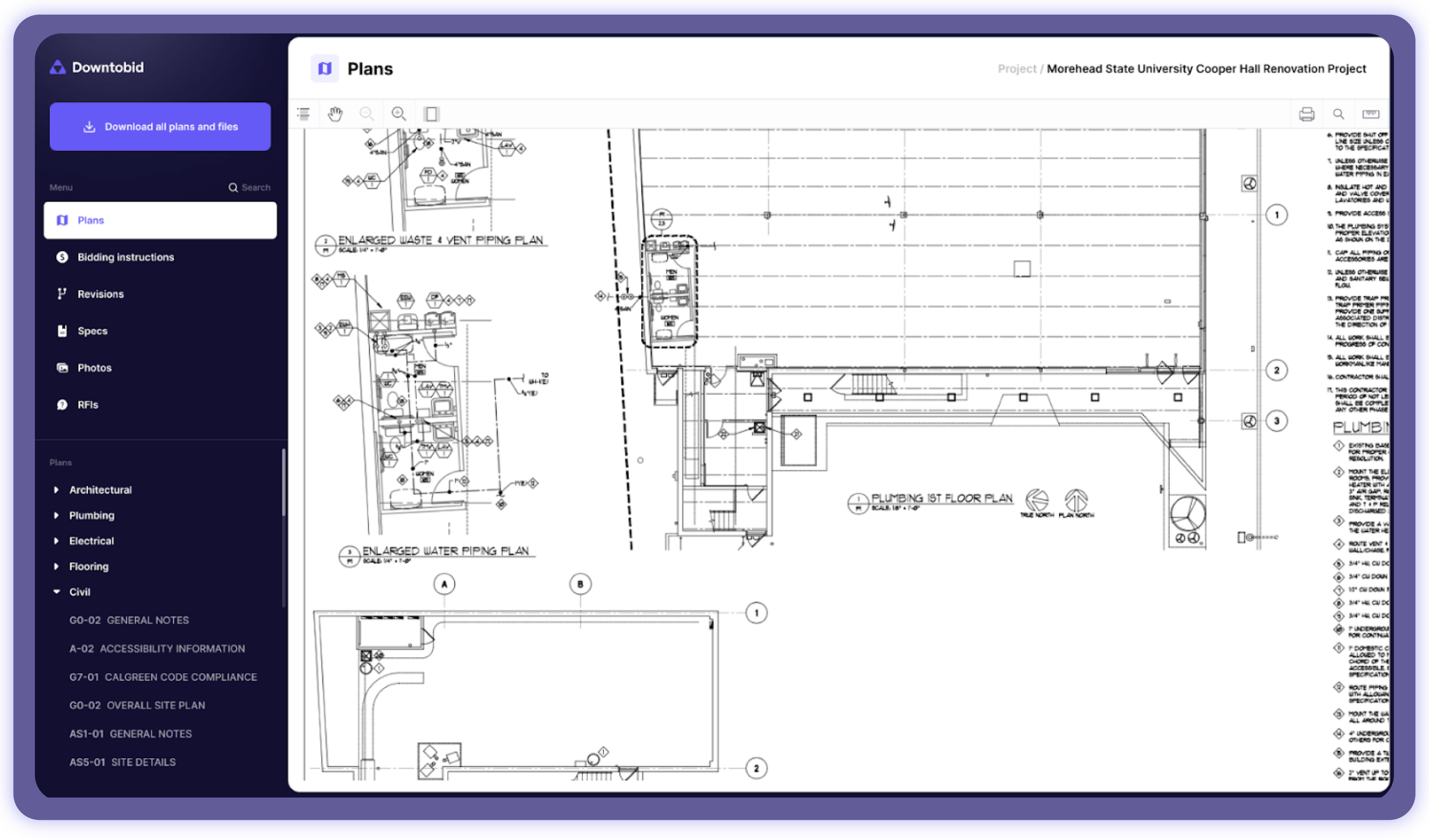
We even go the extra mile by sheeting and indexing every page, complete with detailed titles, so subs can spot exactly what they need at a glance.
Respond to Bids
Every piece of communication from subcontractors, including bid responses, gets forwarded directly to your email. There's no need to toggle between your inbox and another platform. This keeps everything simple and in one place, making it easier than ever to keep track of bids.
Try Downtobid for free today
Downtobid ensures that GCs and subs are perfectly aligned on project scopes right from the outset, removing guesswork and drastically reducing the time spent on initial reviews.
It's a win-win: GCs can send out bid invitations efficiently and subs can respond just as easily. The entire construction bidding process is as painless and productive as possible for everyone involved.
And the results speak for themselves—some bid invitations are seeing over a 60% response rate from subs, and certain projects are pulling in upwards of 80 bids.
Curious to see how it can make your life easier as an estimator? You can jump on board and upload your construction plans for free right here.